
Rachel Ruysch was a Dutch still-life painter from the Northern Netherlands. She specialized in flowers, inventing her own style and achieving international fame in her lifetime. Due to a long and successful career that spanned over six decades, she became the best documented woman painter of the Dutch Golden Age.
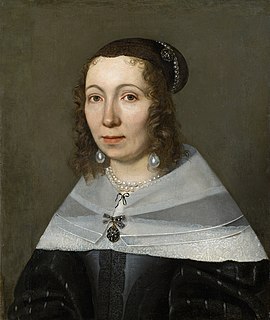
Maria Sibylla Merian was a German-born Swiss naturalist and scientific illustrator. She was one of the earliest European naturalists to observe insects directly. Merian was a descendant of the Frankfurt branch of the Swiss Merian family.
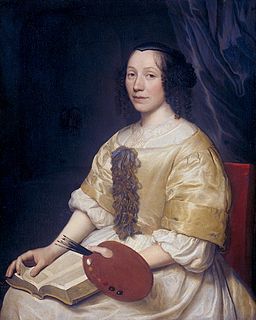
Maria van Oosterwijck, also spelled Oosterwyck, (1630–1693) was a Dutch Golden Age painter, specializing in richly detailed flower paintings and other still lifes.

Amsterdam Impressionism was an art movement in late 19th-century Holland. It is associated especially with George Hendrik Breitner and is also known as the School of Allebé.

Jan Six was an important cultural figure in the Dutch Golden Age.
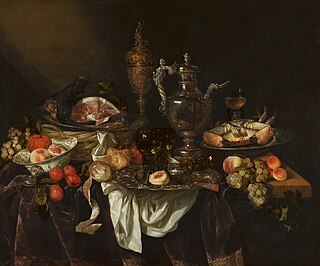
Abraham Hendriksz van Beijeren or Abraham van Beyeren was a Dutch Baroque painter of still lifes. Little recognized in his day and initially active as a marine painter, he is now considered one of the most important painters of still lifes, and still lifes of fish and so-called 'pronkstillevens', i.e. sumptuous still lifes of luxurious objects.

Adriaen van Utrecht was a Flemish painter known mainly for his sumptuous banquet still lifes, game and fruit still lifes, fruit garlands, market and kitchen scenes and depictions of live poultry in farmyards. His paintings, especially the hunting and game pieces, show the influence of Frans Snyders. The two artists are considered the main inventors of the genre of the pronkstillevens, i.e. still lifes that emphasized abundance by depicting a diversity of objects, fruits, flowers and dead game, often together with living people and animals. Van Utrecht also painted a number of flower still lifes. He was a regular collaborator with leading Antwerp painters who had been pupils or assistants of Peter Paul Rubens, such as Jacob Jordaens, David Teniers the Younger, Erasmus Quellinus II, Gerard Seghers, Theodoor Rombouts, Abraham van Diepenbeeck and Thomas Willeboirts Bosschaert.
Events from the year 1664 in art.

Alida Withoos was a Dutch botanical artist and painter. She was the daughter of the painter Matthias Withoos.

Aert Schouman or Aart Schouman was an 18th-century painter, now better known as a glass engraver, from the Dutch Republic.
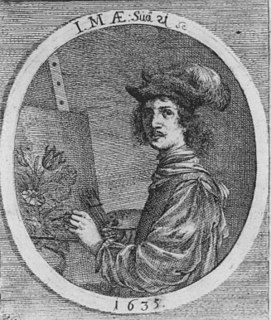
Jacob Marrel was a German still life painter active in Utrecht during the Dutch Golden Age.
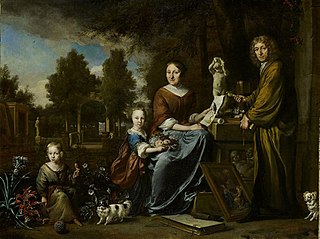
Agnes, or Agneta Block was a Dutch Mennonite art collector and horticulturalist. She is most remembered as the compiler of an album of flower and insect paintings.

Pieter Snyers or Peter Snijers was a Flemish art collector, painter, draughtsman and engraver. He practised a wide variety of genres, including portraits, genre painting, still life and landscape painting. His masterpiece is a series of 12 paintings, each representing a different month of the year.

Jan Pieter Brueghel or Jan Peeter Brueghel was a Flemish painter who specialised in flower still lifes and garland paintings. A scion of the famous Brueghel family of painters, he trained in Antwerp with his father and later worked in Liège, Paris and Italy.
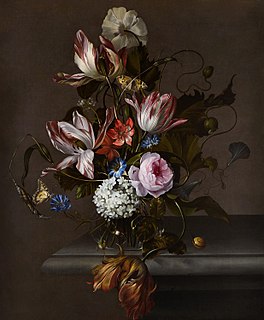
Anna Ruysch was a Dutch Golden Age flower painter.
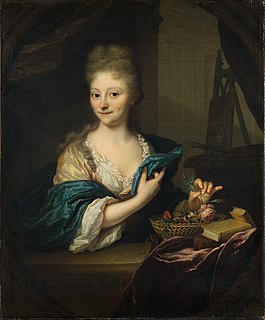
Catharina Backer was an art collector and an 18th-century painter from the Northern Netherlands.

Petronella Oortman was a Dutch woman whose elaborate dollhouse is part of the permanent collection of the Rijksmuseum in Amsterdam.

Roses, Convolvulus, Poppies and Other Flowers in an Urn on a Stone Ledge (1688) is an oil on canvas painting by the Dutch painter Rachel Ruysch. It is an example of Dutch Golden Age painting and is now in the collection of the National Museum of Women in the Arts.

A Vase of Flowers is a 1716 floral painting by the Dutch painter Margaretha Haverman. It is in the collection of the Metropolitan Museum of Art.

Lucretia Johanna van Winter was a Dutch art collector.






















